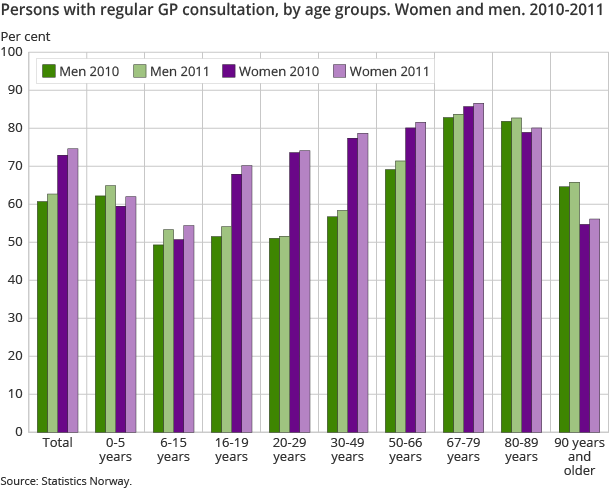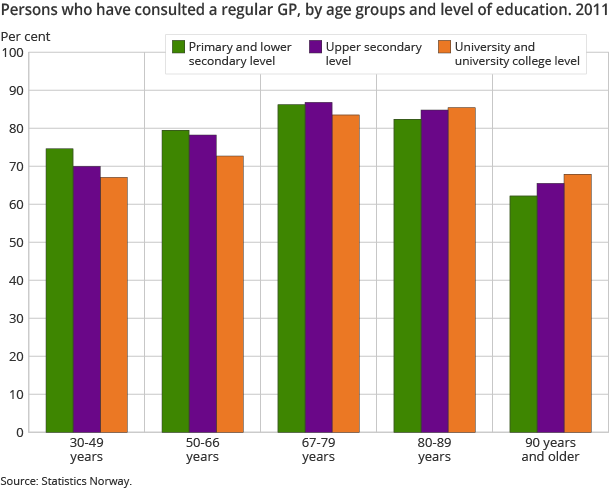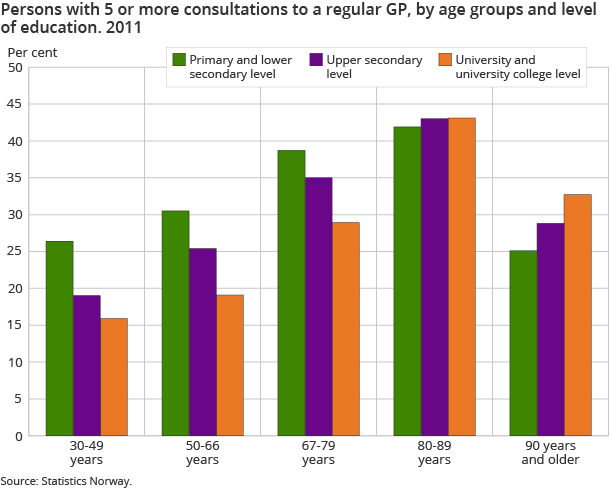Content
Published:
This is an archived release.
Less educated use GP more often
Almost everyone in Norway has a regular GP, and we visit our GP 2.6 times a year on average. Groups with a lower level of education use GPs more often than groups with higher education.
| 2010 | 2011 | |
|---|---|---|
| Total | 2.5 | 2.6 |
| 0-5 years | 1.7 | 1.7 |
| 6-15 years | 1.0 | 1.1 |
| 16-19 years | 1.5 | 1.6 |
| 20-29 years | 2.1 | 2.1 |
| 30-49 years | 2.5 | 2.6 |
| 50-66 years | 3.1 | 3.2 |
| 67-79 years | 4.2 | 4.3 |
| 80-89 years | 4.8 | 5.0 |
| 90 years or older | 2.9 | 3.0 |
A patient’s first contact with the health services is normally through a general practitioner (GP). In 2011, 69 per cent of the population had a consultation with their regular GP, and the percentage was higher for women than for men. Whether we visit our GP, and how often we visit him/her depends on various factors. The statistics show the contact with regular GPs broken down by a selection of sociodemographic variables.
Patients with low level of education have more frequent contact with regular GPs
Statistics show that people with a high level of education live longer and enjoy better health than groups with lower education. They also consult their GPs less frequently. In the total population, 69 per cent of those with a high level of education visited their GP in 2011, compared to 75 per cent of those with a low level of education. The number of consultations per person was also higher for the latter of these two groups. A higher share of those with a low education had five or more consultations in 2011.
Contact
-
Inger Texmon
E-mail: inger.texmon@ssb.no
tel.: (+47) 95 27 50 06
-
Arne Jensen
E-mail: arne.jensen@ssb.no
tel.: (+47) 99 71 22 45



